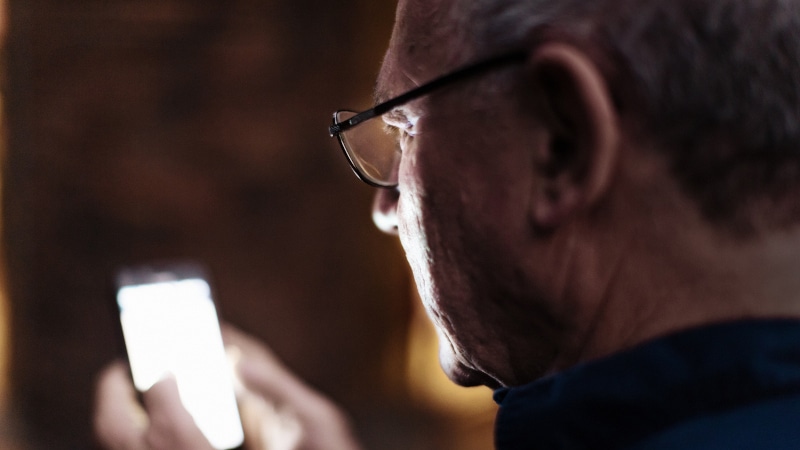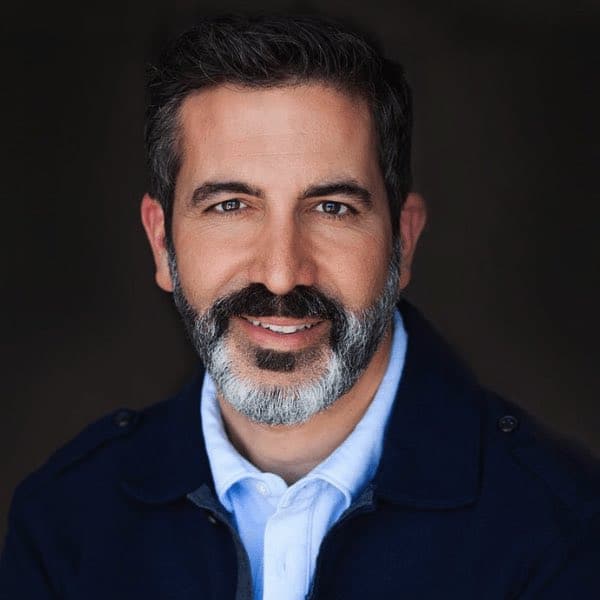By Adam Nisenson, LAMFT, CSAT, EMDR

“There is no dignity when the human dimension is eliminated from the person.
In short, the problem with pornography is not that it shows too much of
the person, but that it shows far too little.”
– Pope John Paul II
When it comes to sex and relationships, no one is normal. There is enormous diversity within the human experience, especially when it comes to human sexuality. Many forms of sexual expression can take place within a legal marriage, just as many types of sex can occur outside of matrimony. Sexual health isn’t limited to whether an experience is in a marriage or not. There’s plenty of healthy and unhealthy sex in marriage, just as there’s a lot of healthy and unhealthy sexual habits we see outside of marriage.
So, as we look at the issue of pornography, it can be easy to look at it from the point of view as an addiction, infidelity, and a marriage killer. And indeed, pornography can be highly addictive and often leads to the end of marriages.
But rather than merely moralizing about how pornography destroys families, which it does, we need to be asking more in-depth questions about how pornography affects real lives and our culture at large. We need to consider porn’s role in teaching men about women. We need to think about the effect on society of an entire generation of men learning about sex from pornography rather than from real sex.
Does Watching Pornography Lead to Unhealthy Views of Sex and Relationships?
Pornography is incredibly prevalent. The popular online site PornHub (2019) released its year-in-review statistics: over 42 billion site visits. That’s an average of 115 million online visits each day.
This is an unprecedented situation. The widespread availability of online porn means that young people are learning about sex from pornography. Adults have unlimited access to a vast array of material that would have been unthinkable to previous generations. This has created an inaccurate and skewed view of what real sex and making love is. And that may be leading some men to seek out the kinds of sex they see on screen rather than the intimacy and true love that we genuinely need as human beings.
In addition to its prevalence, pornography is controversial. Despite or maybe because of its popularity, pornography has long been considered unhealthy and dangerous, with the state of Utah in 2016 officially calling it “a public health hazard” (Domonoske, 2016). Supreme Court Justice Potter famously said of pornography, “I know it when I see it.” Still, it’s hard to know whether or not it actually causes harm.
Both research and public opinion have come to various conclusions. This uncertainty means that individuals may be the final arbiter of how porn-use affects them. If that individual is a teenage boy, he may not have the maturity to understand the exploitation involved in the creation of pornography. Frankly, most consumers don’t make the distinction between mass-produced porn and women-focused ethically produced pornography.
If you worry that you might have an unhealthy relationship with pornography, ask yourself honestly if it is playing a role.
The messages in many porn films represent a big lie. That being sexually dominant is a crucial part of masculinity, that female pleasure doesn’t matter, and that size does.
Porn Does Not Show Real Sex
With the advent of the internet, porn has become incredibly easy to access, and that means it is where more and more young people learn their first lessons about sex. Nowadays, learning about sex from other kids on the playground sounds almost wholesome by comparison. And the neighborhood playground probably portrayed a more accurate depiction of real sex than porn does.
Pornography tends to feature people with specific body types having sex in positions that look good on camera. But these positions may not be comfortable for real people in real life. Many people may not be comfortable making the volume of noise you hear in pornography. In reality, people have a much greater diversity of body types, enjoy sex in positions that may not work on camera, and they may not express their satisfaction as loudly as porn stars do. People in porn films also typically do not use condoms, which may contribute to the idea that safe sex is not sexy. This myth can have serious adverse health consequences (McNamara, 2017).
Real-world sex tends to contradict the myths involved in the big lie, while porn reinforces them. In pornography, women often depict a fantasy female designed to satisfy men’s desires. This version of a woman can contribute to many misogynistic cultural attitudes about women. As sociologist Julia Long puts it, “one of the things that pornography does extremely efficiently is provide an endless flow of narratives of women being treated as objects, violated, or ‘done to’ (Long, 2016).”
Given these pervasive misogynistic ideas about sex and women, men can adopt them without even realizing it. If you’re concerned about your own pornography use, ask yourself: Is my idea of “good sex” generally positive towards women? Has porn contributed to my view of sex?
Impact on Relationships
 Research into the impact of porn on relationships has found mixed results. While an early study suggested that porn viewing made men lose interest in their partners, more recent studies found that wasn’t the case. Starting to watch porn, however, has been found to predict divorce, although the cause and effect relationship is not clear. Another study found that men who watched pornography were less satisfied with their sex lives (Brown, 2017). Other studies have looked at the relationship between pornography use and infidelity. Couples that don’t watch porn at all have lower rates of cheating. In contrast, porn viewing was associated with less relationship satisfaction and higher levels of infidelity (Streep, 2014).
Research into the impact of porn on relationships has found mixed results. While an early study suggested that porn viewing made men lose interest in their partners, more recent studies found that wasn’t the case. Starting to watch porn, however, has been found to predict divorce, although the cause and effect relationship is not clear. Another study found that men who watched pornography were less satisfied with their sex lives (Brown, 2017). Other studies have looked at the relationship between pornography use and infidelity. Couples that don’t watch porn at all have lower rates of cheating. In contrast, porn viewing was associated with less relationship satisfaction and higher levels of infidelity (Streep, 2014).
What is clear is that pornography presents an unrealistic view of women and sex. Some men may be able to keep in mind that porn offers a fantasy, and they may not let it interfere with their enjoyment of real-life sex. Others, however, may find that spending so much time in a fantasy world of sex makes the real world, with actual women seem unsatisfactory by comparison. If that sounds like you, it may be time to scale back your viewing and perhaps talk with a therapist about how porn is impacting you and your life.
Porn Use and Sex Addiction
We know lots of people watch porn. For a smaller number, use rises to the level of addiction to a degree comparable to drug addiction. One study found that the striatum, an area of the brain involved in reward, was smaller in people who watched a lot of porn. However, it is not clear if this was a cause or effect. Another study looked at the brains of men with compulsive sexual behaviors (CSB) while they watched pornographic material and found that three of the same areas were activated as when drug addicts were shown drug stimuli. Men without CSB didn’t show this activation pattern (Brown, 2017).
If you find yourself struggling with your pornography use, seeing a therapist who specializes in sex addiction can help you understand and change your behavior. Therapy can also help alter any harmful views you may have absorbed about sex, relationships, or women.
Does Pornography Lead to Violence?
 Some people have wondered whether excessive porn viewing makes individuals more likely to commit sex crimes. Research has shown that, in societies where pornography was made legal after being illegal, the rate of sex crimes went down. But research by Neil Malamuth found that while excessive porn use is not the sole cause of sexual violence, it increases the odds that an individual with such inclinations will commit sex crimes (Brown, 2017).
Some people have wondered whether excessive porn viewing makes individuals more likely to commit sex crimes. Research has shown that, in societies where pornography was made legal after being illegal, the rate of sex crimes went down. But research by Neil Malamuth found that while excessive porn use is not the sole cause of sexual violence, it increases the odds that an individual with such inclinations will commit sex crimes (Brown, 2017).
Whether or not porn contributes to actual violence, it indeed contains a lot of images of it. And those images can have a profound effect on how men view women. For young people whose “sex education” is coming from these films, the lesson that violence against women is acceptable and even desirable can have dire consequences. While Michael Castleman (2016) points out that many scenes of violence in porn are in the context of consensual BDSM scenarios, this distinction may be lost on most young people.
Healthy Porn Use
But pornography can also be part of healthy sex life. While men who watch porn alone report lower satisfaction in their relationships, partners who watch together are more sexually satisfied and more committed to each other (Maddox, 2011). In this way, porn can be something that is enjoyed together and contributes to a loving, dedicated relationship—used as a tool that the couple shares, porn is not an escape from the real world but a fantasy that a couple enjoys together.
Some people watch porn without negative impacts on their beliefs or behaviors. If you’re in a relationship and wondering if porn is a problem, ask your partner. In addition to evaluating your porn use, you can open up communication with your partner to see how they feel it impacts your relationship.
Real Love in the Real World
 Sex does not equal love, but you can make love while having sex. Understanding sex as something that happens in the real world with a real person is part of building a loving, reciprocal relationship very different from the ones portrayed in porn films.
Sex does not equal love, but you can make love while having sex. Understanding sex as something that happens in the real world with a real person is part of building a loving, reciprocal relationship very different from the ones portrayed in porn films.
Technology has made porn ubiquitous, and advances in virtual reality will likely increase its appeal. It’s not going anywhere. But we can look critically at porn’s messages and how they impact us. We can control what we watch, how much we watch, and whether we watch at all.
As society at large wrestles with the consequences of different types of sexual addiction, therapists will have to give serious consideration to the pros and cons of pornography use. Each of us will have to ponder our values as they relate to pornography and our attitudes towards women, real sex, and intimacy. We must each decide whether porn should play a part in a healthy life. If you’re unsure what your relationship to pornography is and should be, consider consulting with a Certified Sex Addiction Therapist (CSAT) in Utah today.
About Adam Nisenson

Adam is a CSAT at Healing Paths, Inc. in Bountiful and Salt Lake City, Utah. He specializes in working with men and their unique mental health issues. He helps them find a safe place where they feel comfortable asking questions. He is also the Executive Director of the Jung Society of Utah. Learn more about Adam HERE.
_________
Works Cited
Brown, J. (2017, September 26). Is porn harmful? The evidence, the myths, and the unknowns.
Castleman, M. (2016, June 15). How Much of Porn Depicts Violence Against Women?
Domonoske, C. (2016, April 20). Utah Declares Porn A Public Health Hazard.
Long, J. (2016, May 27). Opinion | Pornography is more than just sexual fantasy. It’s cultural violence.
Maddox, A. M., Rhoades, G. K., & Markman, H. J. (2011, April). Viewing sexually-explicit
materials alone or together: associations with relationship quality.
McNamara, B. (2017, July 10). 5 Reasons Porn Is NOT Sex Ed.
PornHub. 2019. The 2019 Year in Review.
Streep, P. (2014, July 16). What Porn Can Do to Intimacy.
